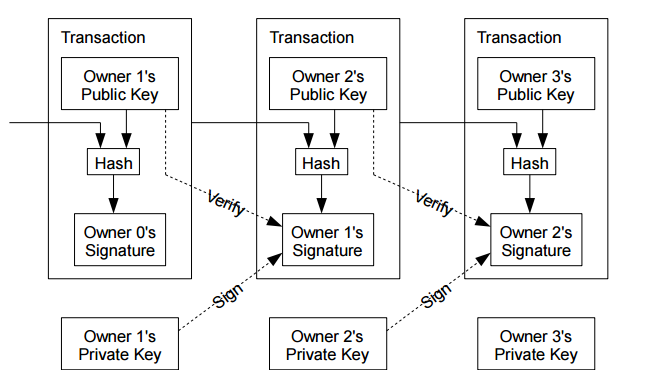
Abstract. A purely peer-to-peer version of electronic cash would allow online payments to be sent directly from one party to another without going through a financial institution. Digital signatures provide part of the solution, but the main benefits are lost if a trusted third party is still required to prevent double-spending. We propose a solution to the double-spending problem using a peer-to-peer network. The network timestamps transactions by hashing them into an ongoing chain of hash-based proof-of-work, forming a record that cannot be changed without redoing the proof-of-work. The longest chain not only serves as proof of the sequence of events witnessed, but proof that it came from the largest pool of CPU power. As long as a majority of CPU power is controlled by nodes that are not cooperating to attack the network, they’ll generate the longest chain and outpace attackers. The network itself requires minimal structure. Messages are broadcast on a best effort basis, and nodes can leave and rejoin the network at will, accepting the longest proof-of-work chain as proof of what happened while they were gone.
Read the full original Bitcoin whitepaper
The Bitcoin whitepaper has been translated from English into the following languages:
Japanese (日本語)
Chinese Traditional (中國傳統的) translated by BitcoinBlogger
Chinese Simplified (简体中文) translated by BitcoinBlogger
Vietnamese (Tiếng Việt)
Italian (Italiano)
Hebrew (עִברִית) translated by Manny Rosenfeld
Spanish (Español) translated by Breathingdog
Russian (русский) translated by Ar Vicco